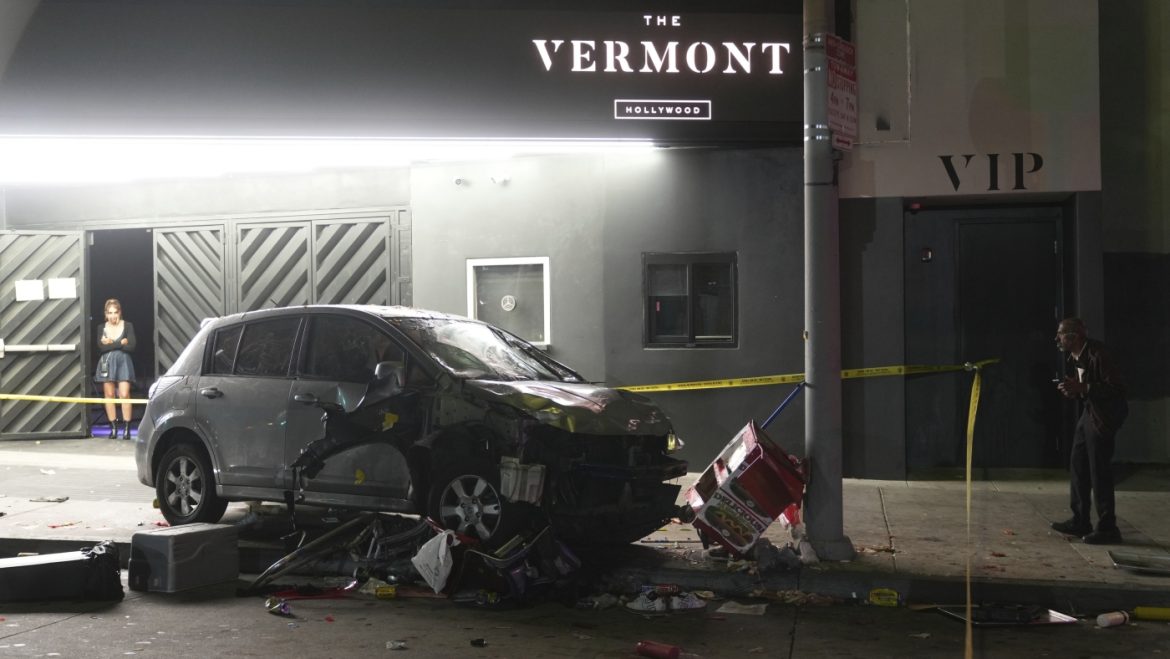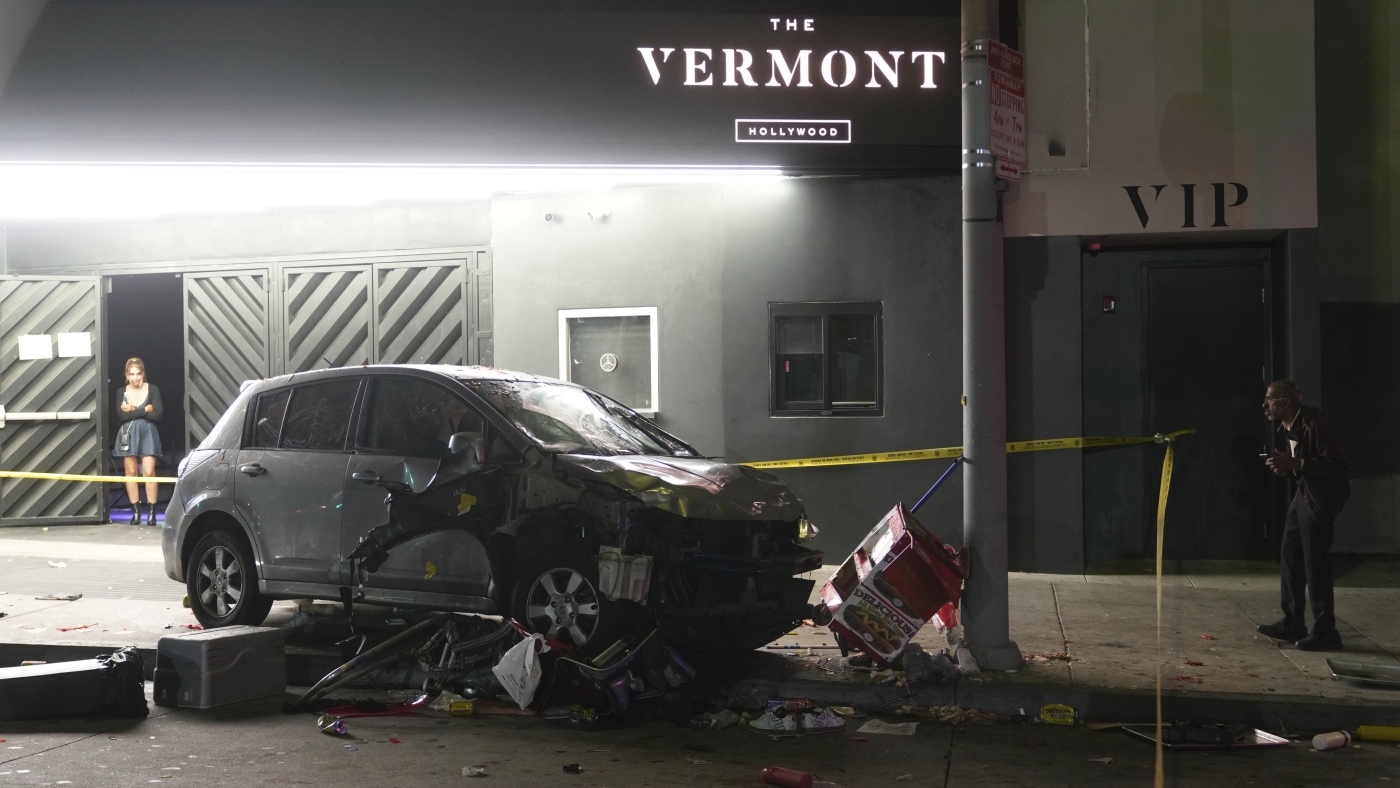The Los Angeles Vehicle Incident: A Multifaceted Analysis
Introduction: A Tragedy Unfolds
The recent vehicle incident on Santa Monica Boulevard in East Hollywood has left the Los Angeles community reeling. With over 30 people injured and several in critical condition, the event has sparked urgent discussions about public safety, emergency response, and the broader implications for urban environments. This report delves into the incident’s details, explores potential causes, and examines the broader societal and infrastructural issues it raises.
The Incident: A Sudden and Devastating Event
The incident occurred early Saturday morning when a silver vehicle drove into a crowd gathered near a nightclub. The sheer number of injuries—reportedly over 30—highlights the vulnerability of pedestrians in high-traffic areas. The severity of the injuries, with some victims in critical condition, underscores the need for immediate and effective emergency response. The Los Angeles Fire Department (LAFD) swiftly mobilized, transporting victims to nearby hospitals and providing critical care on the scene. The rapid response likely saved lives, but the incident also raises questions about whether more could have been done to prevent such a tragedy.
The Vehicle: A Key Piece of the Puzzle
Details about the vehicle involved are still emerging, but one report mentions a “silver car with a broken taillight.” This detail could be significant. A broken taillight might indicate pre-existing damage to the vehicle, suggesting a possible mechanical failure or negligence on the part of the driver. Alternatively, it could be a red herring, distracting from other more critical factors. The vehicle’s condition, along with any potential mechanical or driver-related issues, will be crucial in determining the cause of the incident.
The Driver: Unanswered Questions and Conflicting Reports
The driver’s actions and motivations remain shrouded in uncertainty. Initial reports suggest the driver may have lost consciousness, pointing to a possible medical emergency. However, other accounts mention the driver being shot after the incident, raising further questions. Who shot the driver, and under what circumstances? Was this a response to an immediate threat, or was it an unrelated act of violence? These questions are central to understanding the incident and must be addressed through a thorough investigation.
Potential Causes: Accident, Medical Emergency, or Intentional Act
Several scenarios could explain the incident:
Each of these scenarios presents different implications for public safety and legal consequences. The investigation must carefully weigh the evidence to determine the most plausible explanation.
Public Safety and Security Measures: Lessons to Be Learned
The incident highlights the need for robust public safety and security measures, particularly in areas with high pedestrian traffic. Nightclubs and other establishments that attract large crowds must implement effective crowd control measures, such as barriers, security personnel, and clear evacuation protocols. Additionally, urban planners and city officials should consider infrastructure improvements, such as pedestrian-only zones or better traffic management systems, to reduce the risk of similar incidents.
The Role of Media: Balancing Accuracy and Sensitivity
The media plays a crucial role in shaping public perception and providing accurate information during crises. In the aftermath of the Los Angeles incident, news organizations must strive for accuracy, avoiding sensationalism and speculation. It is essential to rely on verified sources, such as official statements from the LAFD and LAPD, and to avoid spreading misinformation that could further traumatize victims and their families. Sensitivity is also paramount, as intrusive or exploitative coverage can compound the emotional toll of the event.
Community Response: Grief, Support, and Resilience
The Los Angeles community has responded to the incident with a mix of grief, anger, and resilience. Support networks are likely to emerge, offering assistance to victims and their families. Counseling services, financial aid, and other resources will be necessary to help individuals cope with the emotional and financial impact of the tragedy. The community’s ability to come together in times of crisis is a testament to its strength, but it also underscores the need for long-term support and healing.
Moving Forward: Preventing Future Incidents
The incident serves as a stark reminder of the importance of proactive measures to prevent similar tragedies. This includes:
– Enhanced Traffic Safety Regulations: Stricter enforcement of traffic laws and regular vehicle inspections could help identify and address potential mechanical failures.
– Improved Crowd Control Measures: Nightclubs and other venues should implement better crowd management strategies, including barriers, security personnel, and clear evacuation plans.
– Mental Health Support: Addressing underlying mental health issues that may contribute to such incidents is crucial. Increased access to mental health services and early intervention programs could help prevent future tragedies.
– Community Engagement: Encouraging community involvement in public safety initiatives can foster a collective responsibility for ensuring the well-being of all residents.
Conclusion: A Call for Vigilance and Unity
The Los Angeles vehicle incident is a tragic reminder of the fragility of public safety and the need for constant vigilance. As the investigation unfolds, it is essential to approach the situation with an open mind, allowing the facts to guide the conclusions. The community must come together to support the victims, demand accountability, and work towards preventing similar incidents in the future. By doing so, Los Angeles can emerge from this tragedy stronger and more resilient, committed to creating a safer and more secure environment for all its residents.


